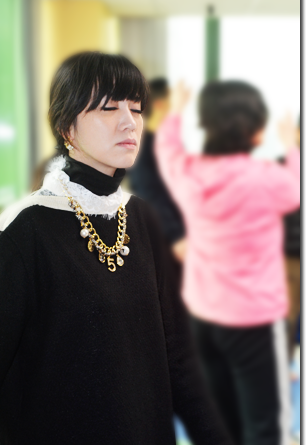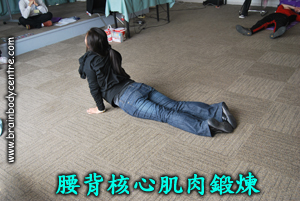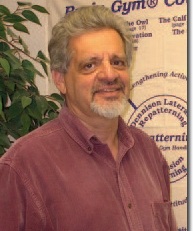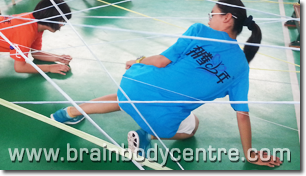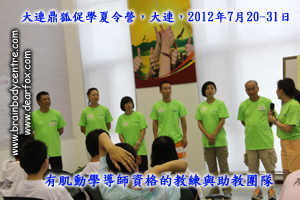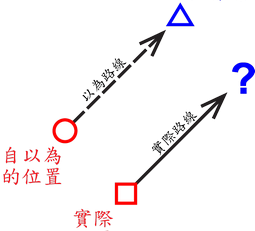Enhancing Visual Skills With Body Intelligence
Amy Choi Feb. 5, 2015, Hong Kong
The advanced Educational Kinesiology course Creative Vision prompts Amy Choi to reflect on the subject regarding how to improve natural vision.
Eyes are the window to the soul. The enhancement of vision cannot take place without the adjustment of psychology, mind and vision of life.
The first time I came across a vision-related course was in 1983 during an NLP practitioner training course co-organised by Father George Zee of Hong Kong and Judith DeLozier and Associates. According to the NLP theory, the position and direction of eye ball activities reflect the status of thinking activities in the human brain. People’s thinking and mental status can be changed by adjusting visual modalities, including the size, brightness, colour and distance of the image etc.. A German NLP instructor Mr. Leo Angart, who once lived in Hong Kong for a long time, has put together different elements such as NLP skills relating to beliefs, body movements, energy exercises and visualization etc. and use them for enhancing vision and eyesight. In 1988, he first published a workshop manual called Vision: the Mind Side – Strategies for Connecting Your Eyesight. Now, his workshop has got “fans” from different areas of the world.
I then came across the Eye Movement Desensitization and Reprocessing (EMDR) developed by an American psychologist Dr. Francine Shapiro during an NLP master practitioner course in Santa Cruz, California of the United States. This method was said to be able to cure the wounded souls of post-war American veterans through eye ball activities. It is evident from various applied psychological skills that people are trying to enter into and improve the body-mind status of human beings through adjusting the eyes.
Among the branches of kinesiology that I know, Educational Kinesiology as pioneered by Paul E. Dennison, Ph.D. and Gail Dennison has the most obvious intention in improving vision and eyesight, and its effectiveness is the most pronounced. First of all, Paul himself was a person with such serious myopia that the local government refused to give him a driving licence when he was young. Through his own balancing, he has improved his eyesight so dramatically that the local government now allows him to drive. This is the most convincing proof of the effectiveness of his method.
Educational Kinesiology courses relating to this include the basic course Double Doodle Play – A Window to Whole Brain Vision. This course aims to stimulate left and right brain hemispheres, left and right hands and whole brain vision through games and activities involving drawing by both hands. There is also the intermediate course Visioncircles. This course aims to open up and adjust vision and various related senses through regulating the balances of people’s eight visual functions and 34 Vision Gym movements. And there is the advanced course Creative Vision, which adjusts vision in all aspects, from the perspectives of structure, personal ecology, emotion and meridian, through educating human body intelligence in seven dimensions. This enables people to develop creative thinking and visual thinking space. I consider these Educational Kinesiology vision courses as the exemplary work of kinesiology in terms of the skills in improving natural vision.
Many people who have attended the courses designed by the Dennsions, even for the most simple basic course Brain Gym 101, notice that their vision and eyesight have improved. For example, it is easier to read, and the eyes feel much better. Some of the students said in feedback that after they attended certain Educational Kinesiology courses such as Visioncircles or Brain Gym In-Depth, their eyesight has improved, just like Paul, and they no longer need to wear glasses.
What actually are the creative vision skills? As I understand it, vision is a learned ability and skill according to the Educational Kinesiology theory. These skills include left right tracking, staring, refocusing, depth perception, peripheral vision, binocular vision, gazing, near vision acuity, and visualisation etc. (extracted from page 54 of Visioncircles). Through specified movements, balances as well as adjustment of living and thinking habits, people can re-learn such skills, enabling vision to be improved.
Based on the framework of balancing procedures of Brain Gym In-Depth, Creative Vision sets its course objectives as improving vision skills through learning and education processes. This is achieved by balancing different realms:
1) structural realm – the eye is composed of the following six main structures: cornea, iris, lens, ciliary muscles, retina, and fovea. Tension of the visual system can be directly reflected as tension of the structural layer. For example, the eye balls of near-sighted eyes are too long; the eye balls of far-sighted eyes are too short; the curvature of the eye balls of astigmatic eyes has deformed. Furthermore, visual tension can be reflected in the eye muscles and other body muscles, especially the neck muscles which are closely connected with seeing. Thirdly, it can also be reflected in the nervous system: eye related reflexes (such as blinking, open eyes, tearing, closed eyes); reflexes related to hearing and visual systems (such as look and listen, listen and look at the same time); and mouth related reflexes (such as chewing, smiling, yawning, salivation response, sneezing, relaxed tongue and swallowing etc.); and whole-body related reflexes (such as breathing, relaxation etc.).
2) personal ecology realm – to explore vision related environmental factors: reading posture, distance from books or computer; any allergy towards paper or soap; rest and movement time for eyes; any chance to get natural light; nutritional support for eyes etc.
3) emotional realm – to explore people’s belief and the mental systems as they relate to vision; to notice directly how you “see” yourself and the world through vision issues related to 12 meridians. For example, the issue relating to the heart meridian is “joy, unconditional love”. You can muscle check which of these two statements is of high gear: “I see my inner light” and “I only see my faults”.
4) energy/meridian realm – to conduct vision accommodation and training through 21 vision related meridian or eye points. Take for an example, the “focus recovery points” on each side of the midline at the back of the skull have releasing effect for the neck, and can help the eyes to point and refocus.
The Creative Vision course manual has already been translated into Chinese. This means an additional area for exploration to the Chinese-speaking Licensed Brain Gym instructors and students.
Wish those students who have completed the Creative Vision course would do something for the eyes everyday, just like me, and continue with their journey of creative vision!

